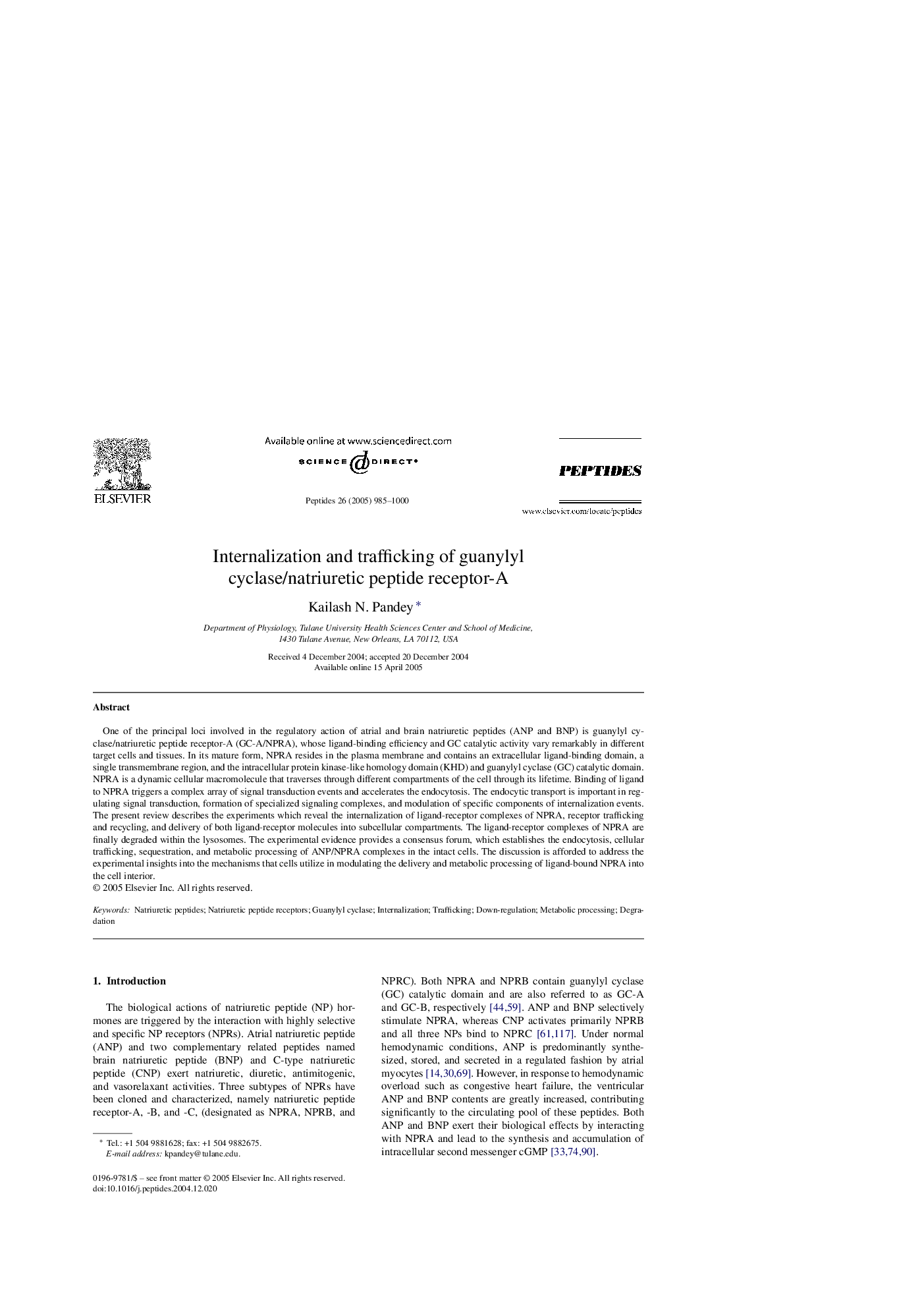| Article ID | Journal | Published Year | Pages | File Type |
|---|---|---|---|---|
| 10836244 | Peptides | 2005 | 16 Pages |
Abstract
One of the principal loci involved in the regulatory action of atrial and brain natriuretic peptides (ANP and BNP) is guanylyl cyclase/natriuretic peptide receptor-A (GC-A/NPRA), whose ligand-binding efficiency and GC catalytic activity vary remarkably in different target cells and tissues. In its mature form, NPRA resides in the plasma membrane and contains an extracellular ligand-binding domain, a single transmembrane region, and the intracellular protein kinase-like homology domain (KHD) and guanylyl cyclase (GC) catalytic domain. NPRA is a dynamic cellular macromolecule that traverses through different compartments of the cell through its lifetime. Binding of ligand to NPRA triggers a complex array of signal transduction events and accelerates the endocytosis. The endocytic transport is important in regulating signal transduction, formation of specialized signaling complexes, and modulation of specific components of internalization events. The present review describes the experiments which reveal the internalization of ligand-receptor complexes of NPRA, receptor trafficking and recycling, and delivery of both ligand-receptor molecules into subcellular compartments. The ligand-receptor complexes of NPRA are finally degraded within the lysosomes. The experimental evidence provides a consensus forum, which establishes the endocytosis, cellular trafficking, sequestration, and metabolic processing of ANP/NPRA complexes in the intact cells. The discussion is afforded to address the experimental insights into the mechanisms that cells utilize in modulating the delivery and metabolic processing of ligand-bound NPRA into the cell interior.
Keywords
Related Topics
Life Sciences
Biochemistry, Genetics and Molecular Biology
Biochemistry
Authors
Kailash N. Pandey,
